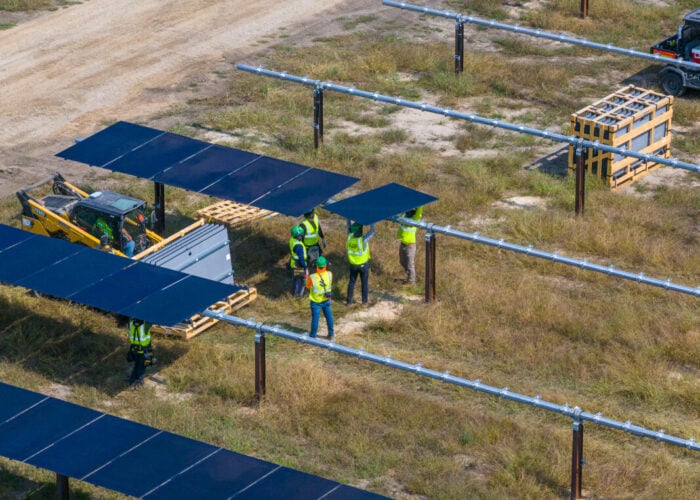Smartflex, a three-year project part-funded by the EU, which began in April aimed at making it possible for architects to create custom building-integrated photovoltaic (BIPV) modules, has reached a number of milestones in its progress including the development of a pilot production line.
The intention is that architects “will be able to use an intuitive piece of planning software to design solar modules that integrate into their buildings as desired,” according to Paul Grunow, director of the Photovoltaik-Institut Berlin.
Try Premium for just $1
- Full premium access for the first month at only $1
- Converts to an annual rate after 30 days unless cancelled
- Cancel anytime during the trial period
Premium Benefits
- Expert industry analysis and interviews
- Digital access to PV Tech Power journal
- Exclusive event discounts
Or get the full Premium subscription right away
Or continue reading this article for free
The project aims to develop “a prototype production line capable of manufacturing photovoltaic modules in accordance with architects’ individual requirements,” according to publicity materials.
“What makes the project unique is its aim to produce these remarkable solar elements using an automated process, reducing manual operations to a minimum,” said Paul Grunow.
The team behind the project, along with the Photovoltaik-Institut includes the Applied Research Institute for Prospective Technologies (ProTech) in Vilnius, Lithuania, glass manufacturer Glassbel, engineering firm Mondragon Assembly, the Swiss BIPV Competence Centre (SUPSI) and others. Around €2.9 million (US$3.96 million) of the project’s cost is funded by the EU Seventh Framework Programme for Research and Innovation.
Three months after it was launched in early April, the team told PV Tech it has now developed a prototype maximum power point tracker, which is in testing for compatibility with the microinverter that will be used for the project.
In addition, the software that will allow architects their freedom to design PV modules in the required size, shape or colour, has also now been completed, as has development of the photovoltaic module manufacturing process and equipment that will be used, the team said.
The project’s test building is the Glasbel headquarters, in Klaipeda, Lithuania. The building’s 200 square metre façade is the main test surface for modules, while modules of up to 3.5 metres in length and up to an output of 750Wp are being used.






